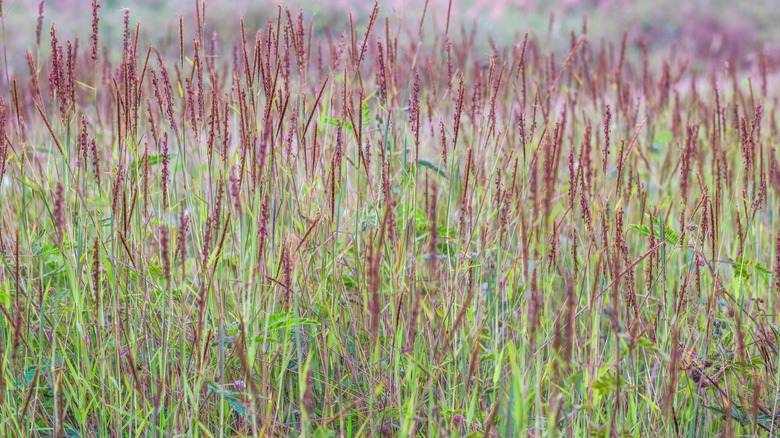Native Ornamental Grasses That Create A Natural Privacy Fence In Your Maryland Garden
There are many advantages to ornamental grasses. Some grasses, growing as much as 8 feet tall in thick strands, make natural privacy fences and provide other benefits in your landscaping. They're not only attractive alternatives to a man-made fence; they provide habitats for animals and insects and, in some cases, attract pollinators. Natural fences are typically less expensive, block the wind and sound, and can be evergreen. Three of these ornamentals, big bluestem (Andropogon gerardii), switchgrass (Panicum virgatum), and Indiangrass (Sorghastrum nutans), are native to Maryland. They are a thoughtful alternative to non-native, invasive grasses like Chinese silvergrass (Miscanthus sinensis) or hardy pampas grass (Tripidium ravennae) that are difficult to kill.
Because Maryland stretches from mountains in the western panhandle to the ocean on the Eastern Shore, the state encompasses USDA hardiness zones 5 to 7. Most of the state is in zones 6 and 7, with the mountainous area in the far west in zone 5. Big bluestem, Indiangrass, and switchgrass will all grow in each of these zones. As with any plant, your landscape's growing conditions should determine which you choose. For instance, you might choose switchgrass if you live on the Eastern Shore because the grass tolerates salty conditions. Either way, you'll have ornamental grasses that double as stylish natural privacy screens.
Growing native ornamental grasses in Maryland
Big bluestem (hardy in zones 4 to 9) is one of the tallest grasses found in Maryland, commonly growing between 5 and 8 feet tall and spreading 2 to 3 feet wide. The plant's little flowers are blue, brown, and red, and the leaves are less than an inch long. Summer's green to blue-green leaves change to orange-red in the fall on this perennial grass. Big bluestem tolerates most soils, but needs good drainage and full sun. Once established, these tough plants are resistant to drought, deer, pollution, erosion, and salt.
Switchgrass (zones 5 to 9) grows up to 3 feet tall and 3 feet wide with long, flowering plumes that can reach 7 feet tall. This perennial tolerates a variety of soil types and full or partial sun, but not full shade. Because its root system can reach 6 feet into the ground, switchgrass is an excellent choice for erosion control. For the same reason, the ornamental is resistant to drought and floods.
Indiangrass (zones 4 to 9) can take several years to reach its full 6 to 8 foot height and, once it does, it may crowd out other plants. The foliage is blue-green and in late summer and fall, spikes with yellow flowers shoot up above the foliage. Indiangrass tolerates many soil types from clay to rocky as long as it's well-drained and in full sun. It's a tough, hardy perennial that resists deer, drought, and erosion, but it should not be planted near buildings because it's a highly flammable grass.

